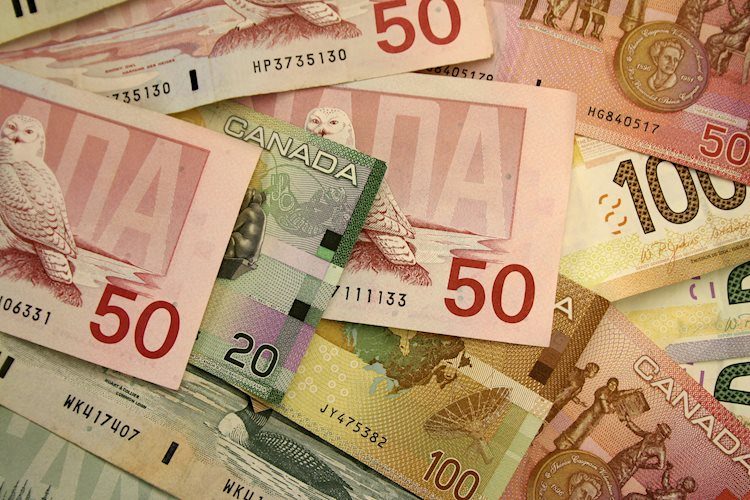- USD/CAD falls below 1.3900 after failing to hold Wednesday’s rally.
- Investors await the Fed policy decision and Canada Employment data.
- The Fed is expected to cut interest rates by 25 bps to 4.50%-4.75%.
The USD/CAD pair corrects below the round-level figure of 1.3900 in Thursday’s North American session. The Loonie pair drops after rallying on Wednesday as the US Dollar (USD) faces some unwinding ahead of the Federal Reserve’s (Fed) monetary policy decision, which will be announced at 19:00 GMT.
The US Dollar Index (DXY), which tracks the Greenback’s value against six major currencies, retraces 50% gains of Wednesday’s session, in which it rose almost 1.60%.
Traders have priced in that the Fed to cut interest rates by 25 basis points (bps) to 4.50%-4.75%, according to the CME FedWatch tool. Investors will look for cues about the likely monetary policy action in December and the impact of Republican Donald Trump’s victory on the inflation outlook.
Meanwhile, the Canadian Dollar (CAD) will be influenced by the domestic employment data for October, which will be published on Friday. Economists expect the Canadian economy to have added 25K new workers, lower than 46.7K in September. In the same period, the Unemployment Rate is estimated to have increased to 6.6% from 6.5%.
USD/CAD trades near the upper boundary of the Ascending Triangle chart pattern on a weekly timeframe around 1.3950. An upward-sloping 50-week Exponential Moving Average (EMA) around 1.3640 suggests a strong uptrend.
The 14-day Relative Strength Index (RSI) hovers near 60.00. Should RSI (14) sustain above 60.00, a bullish momentum will be triggered.
More upside would appear if the asset breaks above the immediate high of 1.3950. The scenario will pave the way for the psychological resistance of 1.4000 and the round-level resistance of 1.4100.
On the contrary, a downside move below the October 29 low of 1.3875 will expose the asset to the October 15 high near 1.3840, followed by the round-level figure of 1.3800.
USD/CAD weekly chart
Canadian Dollar FAQs
The key factors driving the Canadian Dollar (CAD) are the level of interest rates set by the Bank of Canada (BoC), the price of Oil, Canada’s largest export, the health of its economy, inflation and the Trade Balance, which is the difference between the value of Canada’s exports versus its imports. Other factors include market sentiment – whether investors are taking on more risky assets (risk-on) or seeking safe-havens (risk-off) – with risk-on being CAD-positive. As its largest trading partner, the health of the US economy is also a key factor influencing the Canadian Dollar.
The Bank of Canada (BoC) has a significant influence on the Canadian Dollar by setting the level of interest rates that banks can lend to one another. This influences the level of interest rates for everyone. The main goal of the BoC is to maintain inflation at 1-3% by adjusting interest rates up or down. Relatively higher interest rates tend to be positive for the CAD. The Bank of Canada can also use quantitative easing and tightening to influence credit conditions, with the former CAD-negative and the latter CAD-positive.
The price of Oil is a key factor impacting the value of the Canadian Dollar. Petroleum is Canada’s biggest export, so Oil price tends to have an immediate impact on the CAD value. Generally, if Oil price rises CAD also goes up, as aggregate demand for the currency increases. The opposite is the case if the price of Oil falls. Higher Oil prices also tend to result in a greater likelihood of a positive Trade Balance, which is also supportive of the CAD.
While inflation had always traditionally been thought of as a negative factor for a currency since it lowers the value of money, the opposite has actually been the case in modern times with the relaxation of cross-border capital controls. Higher inflation tends to lead central banks to put up interest rates which attracts more capital inflows from global investors seeking a lucrative place to keep their money. This increases demand for the local currency, which in Canada’s case is the Canadian Dollar.
Macroeconomic data releases gauge the health of the economy and can have an impact on the Canadian Dollar. Indicators such as GDP, Manufacturing and Services PMIs, employment, and consumer sentiment surveys can all influence the direction of the CAD. A strong economy is good for the Canadian Dollar. Not only does it attract more foreign investment but it may encourage the Bank of Canada to put up interest rates, leading to a stronger currency. If economic data is weak, however, the CAD is likely to fall.
Read the full article here

